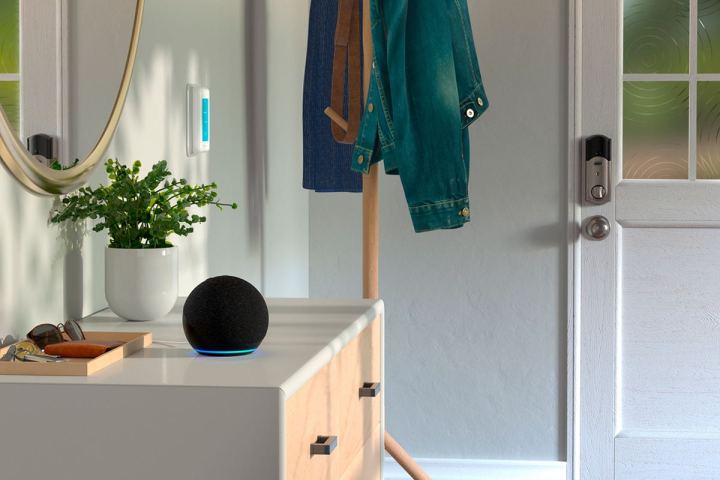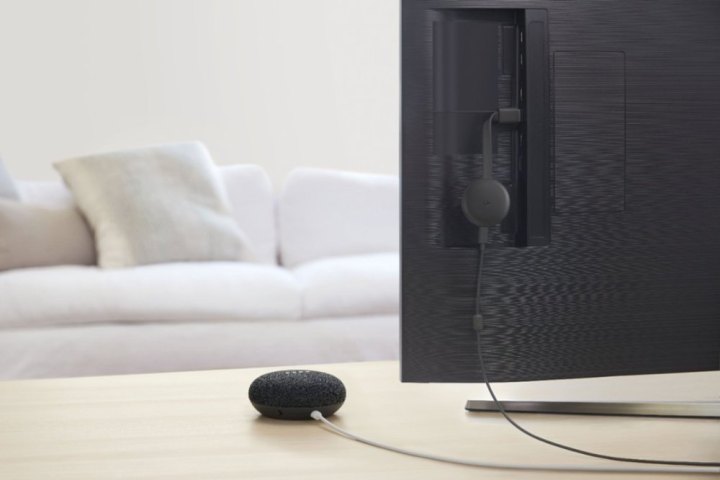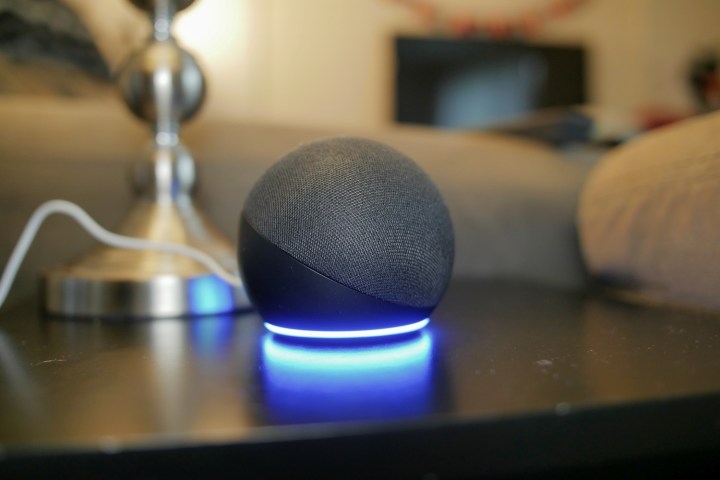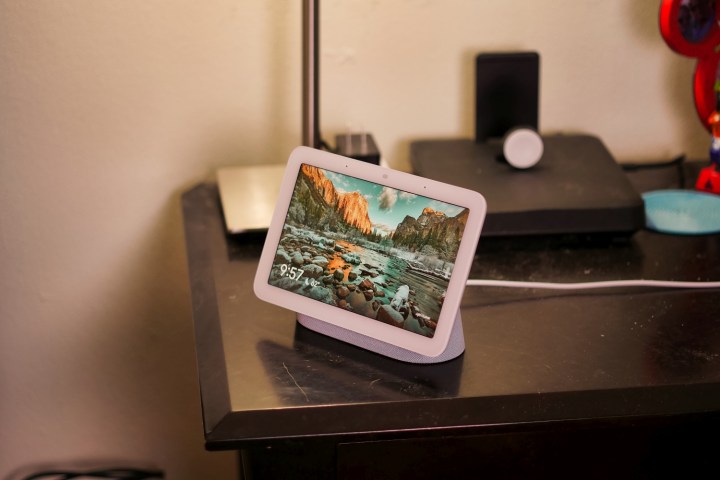When looking for the best smart devices for your home or gifts for your friends, you may come across both the terms: “Bluetooth speaker” and “smart speaker.” The differences aren’t immediately apparent, and sometimes the terms are applied to the same device, so we know it can get a little confusing.
We’re clearing up the mess right now by explaining just what these two categories mean, where they overlap, and what term may be most useful depending on the sort of speaker experience you want. Let’s go!
Basic definitions

Let’s start with an overview to provide a quick summary of Bluetooth speakers vs. smart speakers on the market.
Bluetooth speakers: These are lightweight speakers, often made for on-the-go activities, and designed to connect to a mobile device like your smartphone for music playback via a Bluetooth connection. They help get music in places or situations where it would otherwise be difficult to have it. Something like the JBL Flip series is a classic Bluetooth speaker example.
Smart speakers: These are speakers that can be controlled via an app, voice command, or other means, and are a way to add smart features to audio in a specific location, like a kitchen, lobby, bedroom, or great room. They tend to come with more features and be more stationary than Bluetooth speakers. Something like the Sonos One, Apple HomePod Mini, or Amazon Echo would qualify as a smart speaker.
Now let’s take a closer look at specific features and how they differ between the two.
Portability and power

Bluetooth speakers are the masters of portable sound. Brands like JBL, Sonos, and Ultimate Ears (UE) have made names for themselves by creating speakers you can take anywhere, including the outdoors. Some are even small enough to clip onto a carabiner or loop on a pack, and most have resistances to water and dust…or even the ability to survive a dunk in the pool. All this is enabled by their rechargeable batteries, which can provide at least several hours of music playback before needing to be recharged.
Smart speakers are less portable. They are generally designed to be placed in one central location on a shelf, desk, or table. They typically need a nearby outlet to connect for power, too, and don’t usually have batteries.
Again, there’s certainly overlap between these speaker categories. Some smart speakers are also highly portable (check out our Bose portable speaker pick on our smart kitchen speaker list as an example), and some Bluetooth speakers aren’t made for on-the-go, outdoor use. However, it’s more common for a Bluetooth speaker to have a rechargeable battery, a handle, and resistance to water and dust — while it’s more common for a smart speaker to need a wired connection, be larger, and not have a design made for portability.
Sound quality

Bluetooth speakers are somewhat bound by their natural portability, which means their drivers and other components can’t be as large. Today’s technology can do seriously impressive things with these small speakers and they generate a lot of sound for their size, but audio quality often pays a price. Smart speakers, which tend to be central and often (but not always) larger, are the clear pick when it comes to sound quality. Many smart speakers support connections to TVs, speaker bars, and home entertainment systems for this reason (some, such as the Echo Studio, are specifically designed for it).
If you really want Bluetooth speakers to put out house-filling sound, there is an option: Both Bluetooth and smart speakers usually have the ability to link to other models of the same type, allowing you to play the same audio through multiple sources.
Voice assistants

Bluetooth speakers can have voice assistant compatibility (the JBL Link Portable, for example, has Google Assistant), but it’s not guaranteed, and unlikely on the smaller models. As the name suggests, they are more focused on using the Bluetooth wireless protocol for controls and playback.
Smart speakers don’t always have voice assistants and their accompanying mics either, but it’s much more common, and has become an expected feature in recent years. Amazon’s Echos have Alexa, the Nest Minis use Google Assistant, and HomePods have Siri. Other brands often offer a combination of Alexa and/or
Voice assistants allow the smart speaker to serve as a hub for many kinds of interactions. The right voice commands can help you ask questions about the weather, get updates on sports games, schedule events, and call one of your contacts. They can also connect to supported smart devices around your home and allow you to control them with voice commands. Bluetooth speakers are not usually capable of these things.
Controls and indicators

Controls for Bluetooth and smart speakers are relatively the same. Both tend to have options for power, volume, and playback. Smart speakers may be a little fancier in how those controls are displayed, with larger LED lights or rings as indicators, but they have the same function. The big difference here is that smart speakers typically come with mics and an extra mute button to shut those mics down for privacy.
Smart displays

Smart displays are an added touchscreen that’s typically only available on a smart speaker, like an Echo Show or a Nest Hub Max. Bluetooth speakers are too small and portable for a touchscreen, and it wouldn’t be nearly as useful. If you are interested in an added touchscreen, focus on smart speaker options.
Bluetooth vs. Wi-Fi

Bluetooth speakers generally don’t need a Wi-Fi connection to work. A direct Bluetooth connection to your phone is enough to stream music and other audio. This capability also helps them save on battery life, and makes setup a lot easier.
Smart speakers have both Bluetooth and Wi-Fi connections, and they often need Wi-Fi connections to operate properly. This is why they are bound to the home or office. However, that Wi-Fi connection is also what makes extra features possible, like voice assistants, smart device control, and more.
Note: This is different from streaming audio over Bluetooth vs. streaming audio over Wi-Fi. Smart speakers can require a Wi-Fi connection without enabling Wi-Fi streaming, although some do offer Wi-Fi streaming as well as Bluetooth connectivity. Bluetooth speakers generally can’t stream via Wi-Fi at all. Some people prefer speakers that can stream via Wi-Fi because that can make streaming from a computer more reliable, you don’t have to worry about range as much, and it makes complex setups a bit easier.
Editors' Recommendations
- Yale Assure Lock 2 vs. August Wi-Fi Smart Lock: which is the better smart lock?
- Best air purifier deals: Save big on Dyson, Shark, TCL and more
- Best security camera deals: Ring, Arlo, Blink and more on sale
- Arlo Pro 5S vs. Ring Stick Up Cam Pro: Which is the best premium security camera?
- Blink Mini 2 vs. Wyze Cam v4: Which is the better budget security camera?



